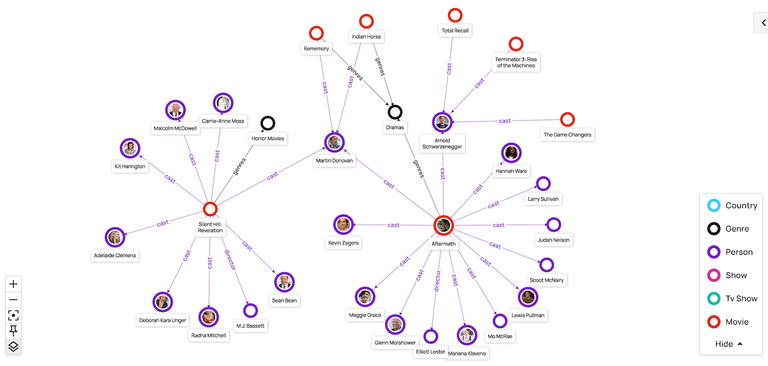
How Data Graphs addresses Gartner’s obstacles to Knowledge Graphs
Data Graphs is a product we have designed to lower the barrier of entry for organizations to launch a knowledge graph platform. We have shortened the time to launch from months down to hours (in a recent event, we built a Netflix knowledge graph from scratch with Data Graphs in just 12 minutes).
In Gartner's recent report on the significance of knowledge graphs, they listed some obstacles that many companies encounter when trying to implement and maintain them successfully. In this piece, we'll be explaining how our new knowledge graph product, Data Graphs handles each of these obstacles.
Gartner's Obstacle 1:
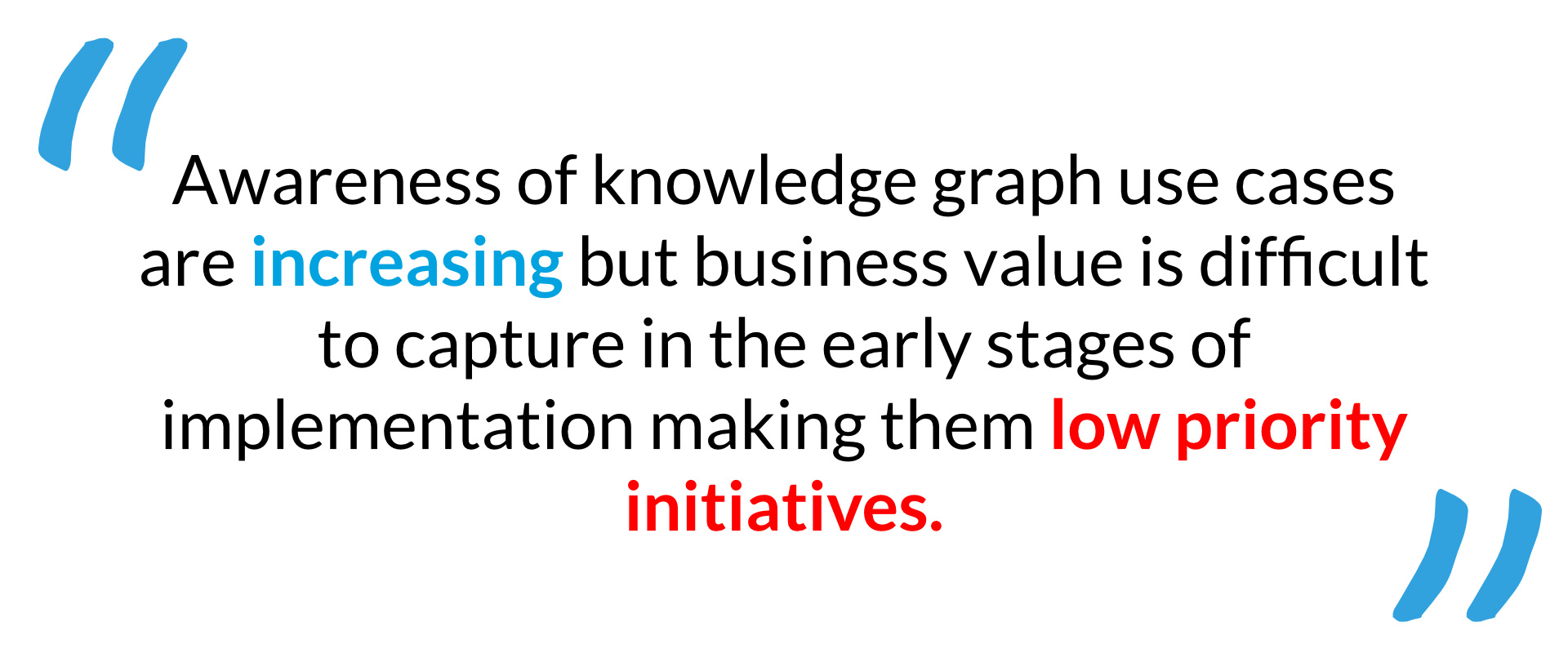
Data Graphs Solution:
Lowering the barrier of entry to knowledge graphs will make it easier for businesses to see value quickly, and therefore pushing them higher up the priority list. Specifically, this means speeding up the ability to do proof of concepts, and do simple but informative demos that allow organizations to realise early value at low cost and low risk.
Gartner's Obstacle 2:
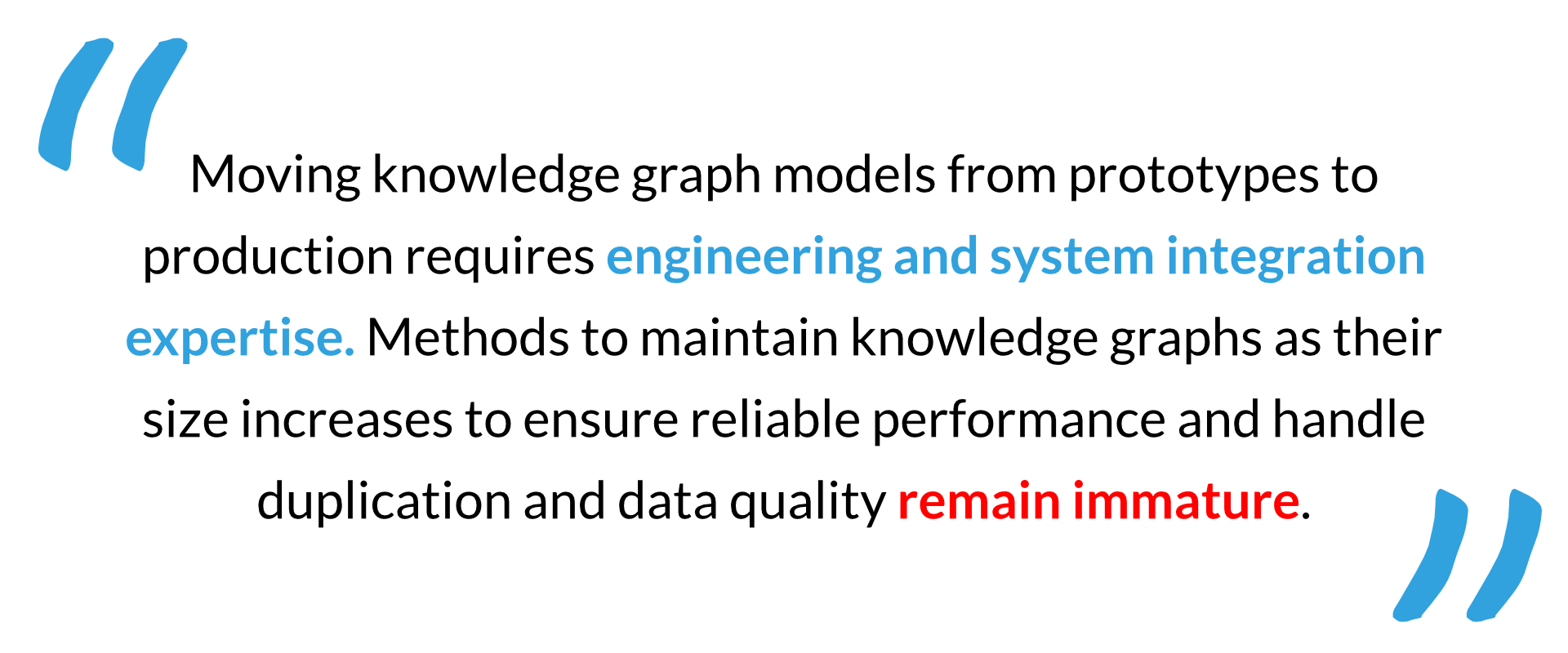
Data Graphs Solution:
Data Graphs is an out-of-the-box product. All the engineering and system integration expertise, that Gartner points out as an obstacle to most companies, is already taken care of. Data Language has already addressed the main engineering challenge and initial setup within the product, and engineered the knowledge graph capability. Integrating with Data Graphs is light, easy, and based on common web standards and well constructed, robust APIs which saves you having to wrestle with complicated graph data standards.
Gartner's Obstacle 3:
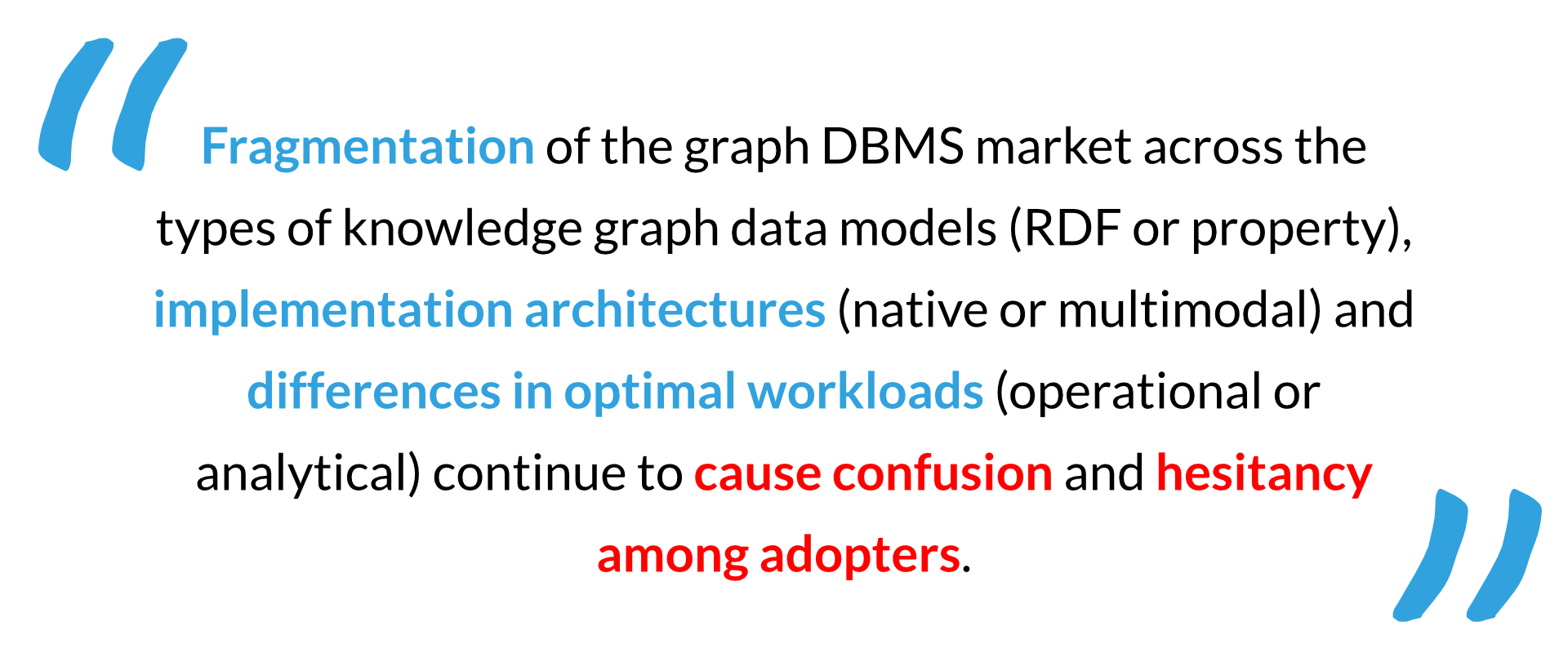
Data Graphs Solution:
This is a slightly more nuanced obstacle that in summary deals with the fact that there are many different types of knowledge graph. Any one product, including Data Graphs, is not a one-size-fits-all solution so companies must be careful to choose the right knowledge graph for their use-case.
Data Graphs, for example, is not trying to be an RDF Triple Store, which will provide the infrastructure for a great knowledge graph for some use-cases, but less suitable for others.
In Data Graphs we’ve distilled-down what we’ve seen as the most useful attributes of a knowledge graph and vastly simplified their use for businesses that don’t want/don’t have the resources to engineer a full RDF triple store or a property-label graph solution.
Over our 10-15 years experience in implementing knowledge graph solutions in the enterprise, we find that a large percentage of solutions don’t need RDF based platforms. Instead, we have tried to create the perfect cocktail of enough semantics to deal with the use cases that most businesses have, but at the same time keeping it simple enough so as not to get bogged down in complexities that the majority will never need. Data Graphs does provide RDF interoperability through its JSON-LD APIs, and Data Graphs does not preclude you from using an enterprise-scale graph database too. Data Graphs can also be used as a graph entity editing tool, that can be integrated with an RDF or property graph database, and this is a soluiton pattern used by some of our customers.
Gartner's Obstacle 4:
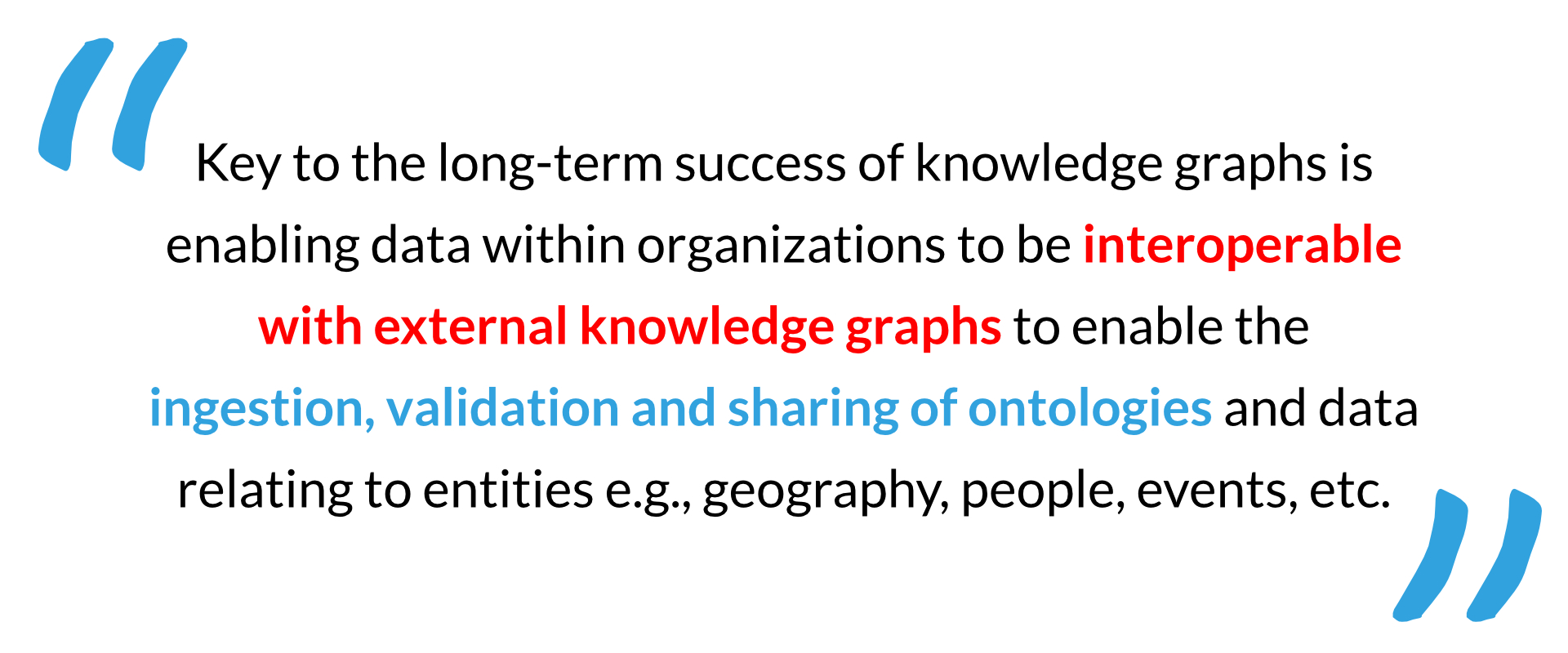
Data Graphs Solution:
To tackle this obstacle we have to go back to the main lesson we always try to impress on our knowledge graph clients: preparation is key. You have to understand your data and design it well, solid domain modelling is always the imperative first step. We often see projects get distracted by the technology when in reality some of the most important work when creating a knowledge graph is the preparation, making sure your data is described, structured and understood clearly. Desgining a quality domain model/ontology for your own use-cases is critical to unlock the value in sharing linked-data. Data Graphs allows you to construct your domain model and visulize it within the tool, and also allows you to export the domain model as an RDF/OWL ontology. Data Graphs uses linked-data at its heart, to enable interoperability through JSON-LD and JSON-LD APIs.
Find out more about Data Graphs and our knowledge graph experience below.

